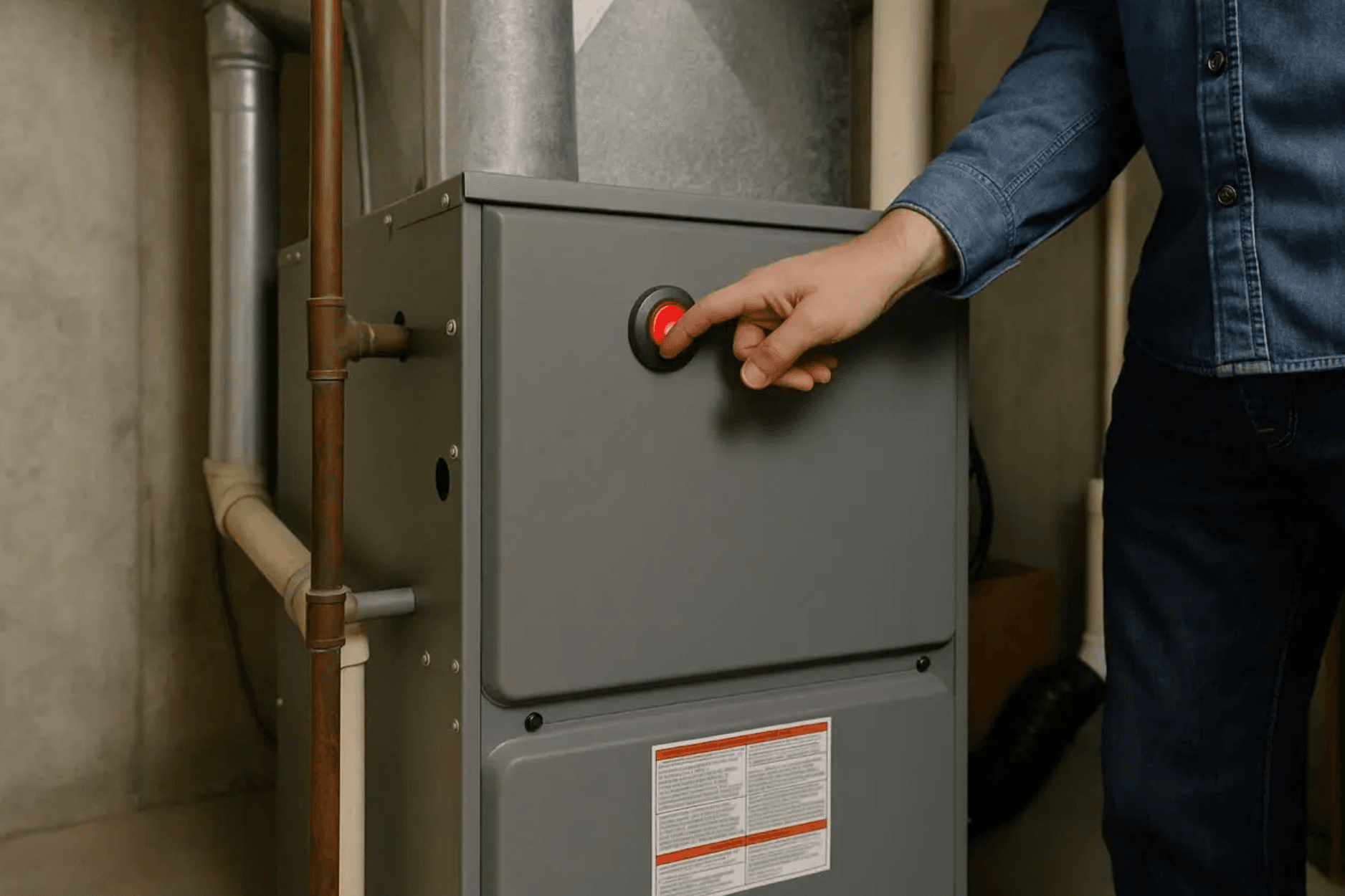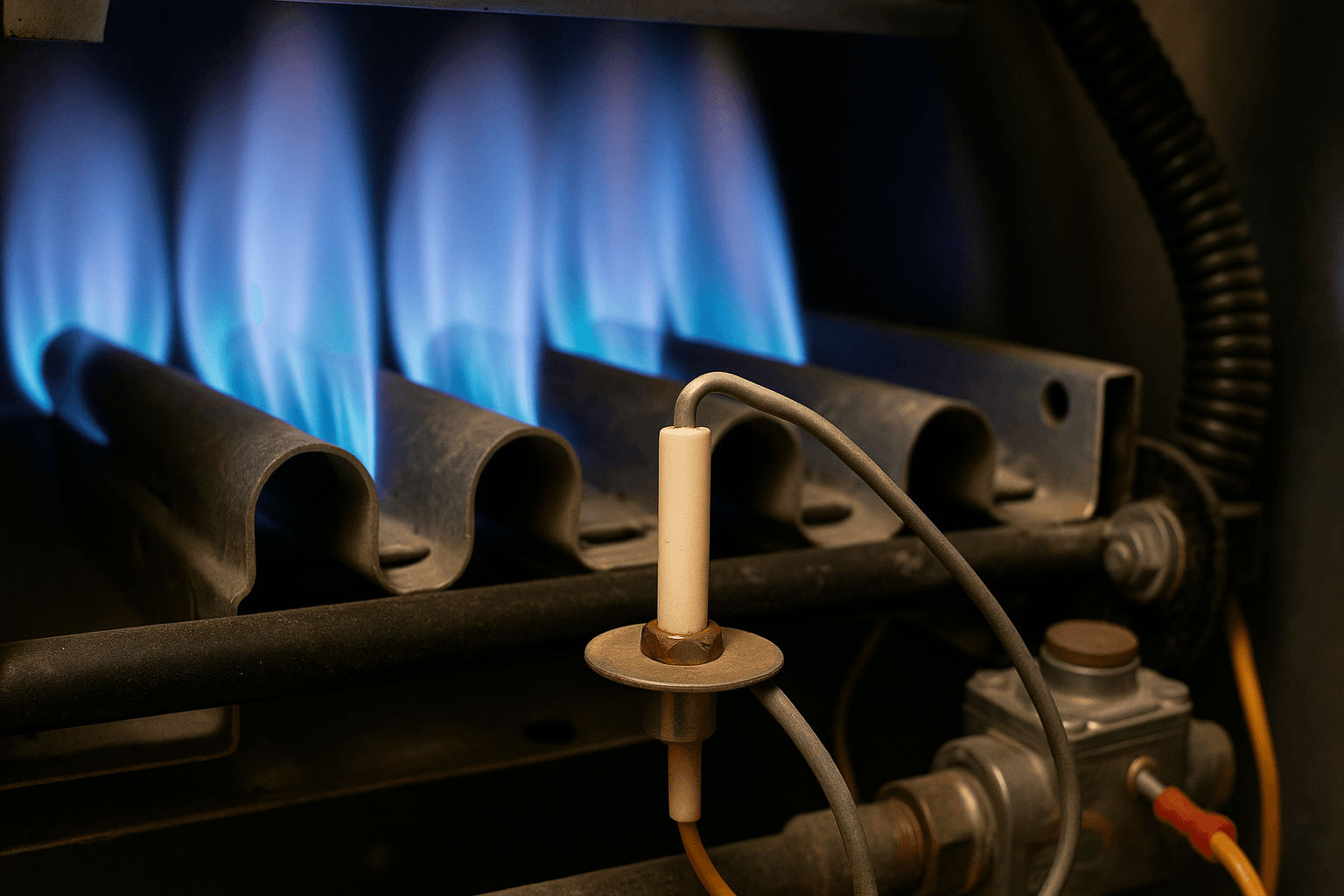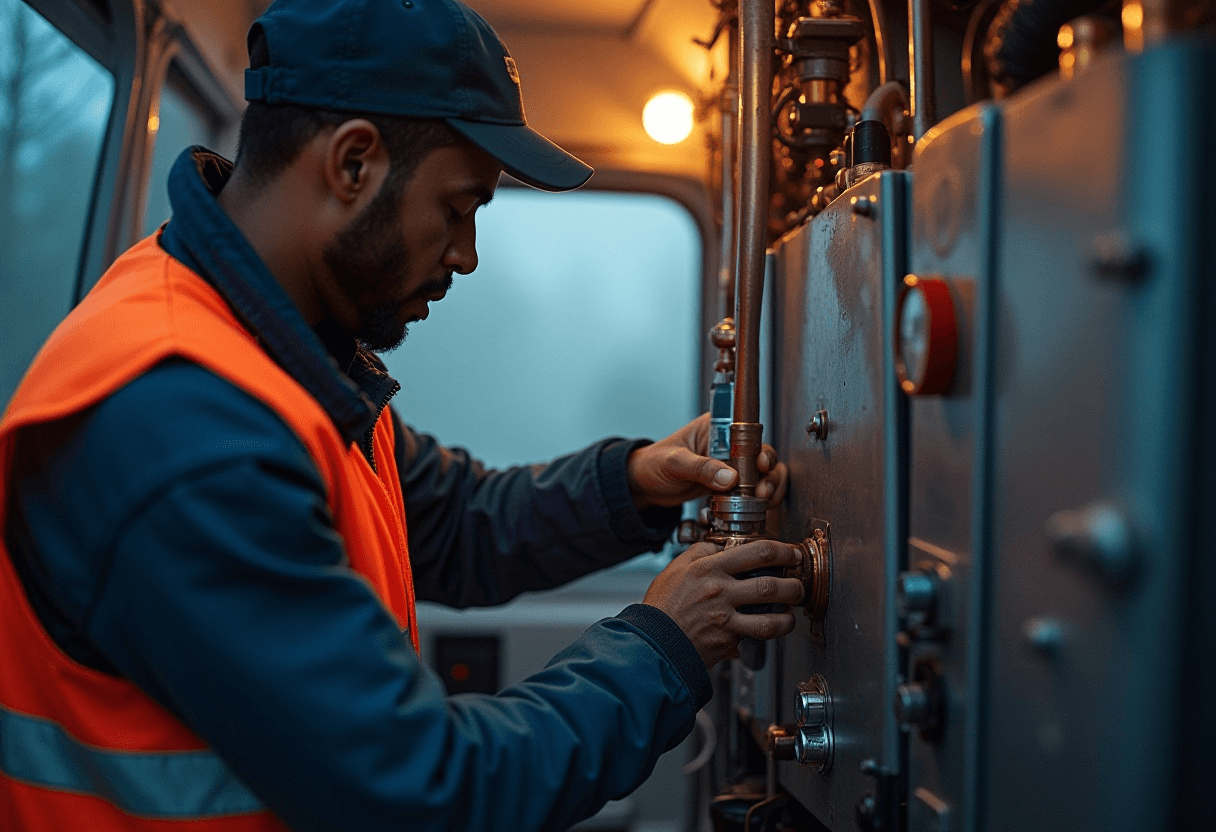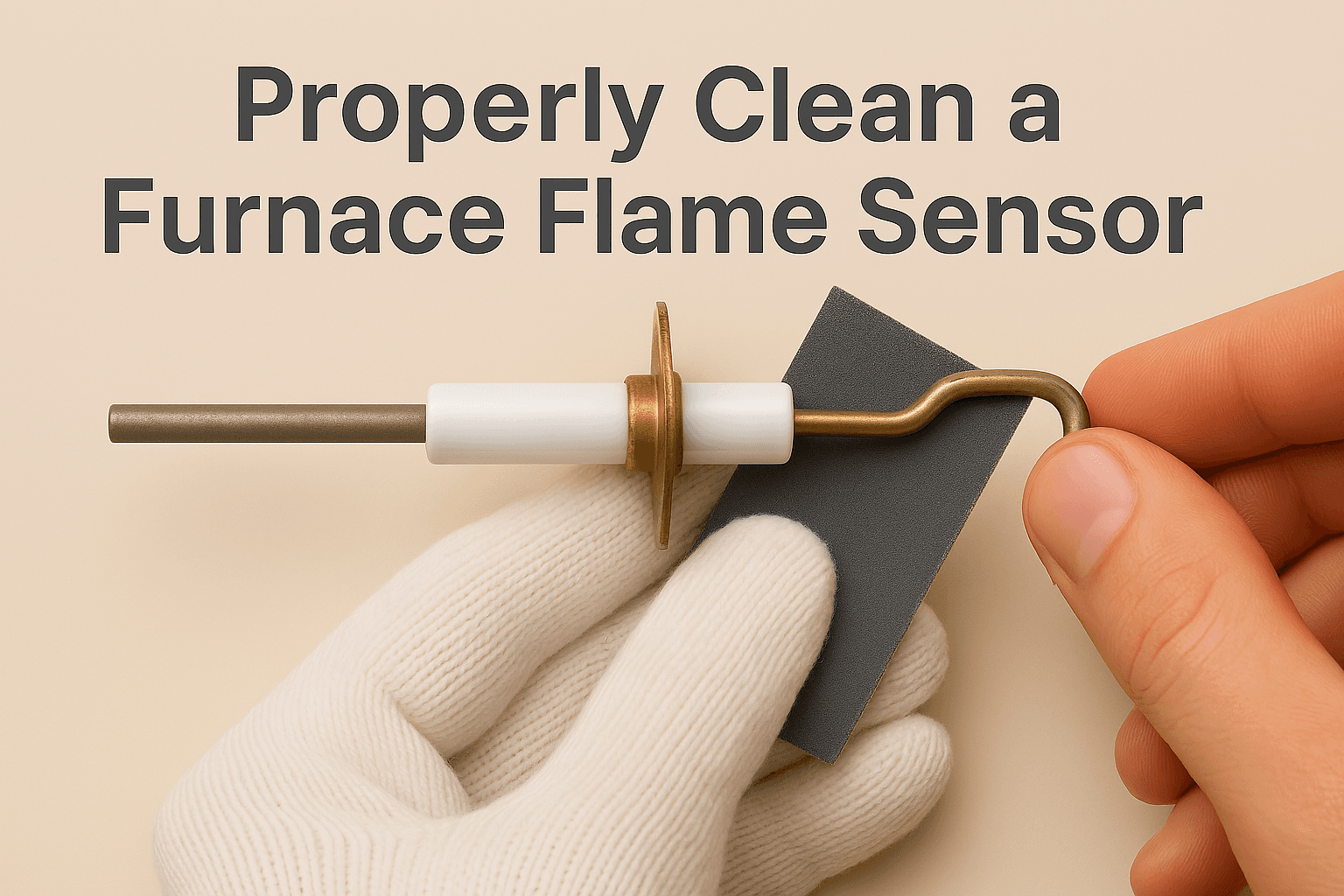Review
What Are All the Parts of a Furnace? - Anatomy of a Furnace
AZparts Team
Updated on July 7, 2025
8 min read
Your furnace is made up of many important parts, all working together to keep your home warm and comfortable. In this guide, AZParts will break down all the main furnace parts, explain how they work, highlight which ones are most likely to fail, and answer common questions about furnace maintenance and repair.

1. Understanding All the Parts of a Furnace and their Functions
1.1. Circuit board123
The circuit board, or control board, is the main control center of the furnace. It manages parts like the burner, blower motor, and inducer fan based on signals from the thermostat and sensors. When working properly, it makes sure everything runs in the right order for efficient heating. If there’s a problem, always check the main breaker first because sometimes a tripped breaker is the real cause.
Looking for a reliable replacement? Explore the AZParts furnace circuit board for durable, high-performance control boards compatible with most residential furnaces.
1.2 Return Register
A return register may resemble a standard air vent, but it’s typically larger and often installed in hallway ceilings. It plays a key role in your HVAC system by drawing air back into the furnace to be reheated, allowing for proper air circulation and recycling throughout your home.
1.3. Air Filter
The air filter is a small but essential part of the furnace system. It traps dust, dirt, and pollutants before the air moves through the furnace and into your home. By keeping the air clean, the filter protects internal components, supports proper airflow, and improves indoor air quality. If the filter gets dirty, it can block airflow, reduce efficiency, and even cause system breakdowns.
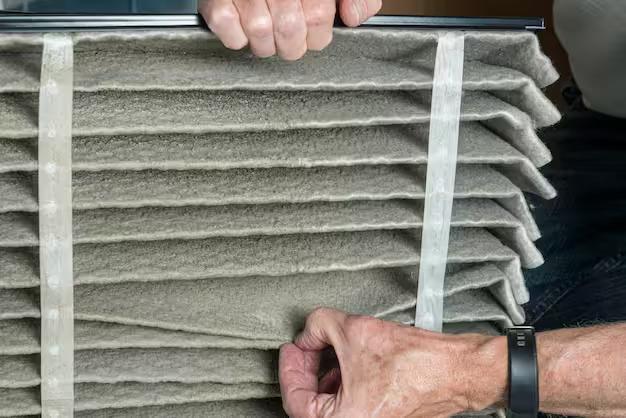
Regularly replacing the air filter prevents system breakdowns (Source: Freepik)
1.4. Blower
The blower is responsible for moving air through the furnace and into the supply ductwork. It pushes heated air into your home and pulls cooler air back into the system to be reheated. Without the blower, the treated air would have no way to circulate through the house.
1.5. Blower Motor
The blower motor powers both the blower and the fan inside it, pushing air through your HVAC system. To get the motor running and keep it going, the blower motor capacitor provides the necessary boost. Without a functioning blower motor, air wouldn’t be able to circulate effectively through your home. Both the blower and the blower motor are located inside the blower chamber, a key component of your HVAC system.
1.6. Supply Plenum, Duct and Register
The supply plenum is a crucial component of a gas furnace system. Positioned directly above the furnace, it collects the heated air from the heat exchanger and serves as the distribution hub. From there, the warm air travels through the supply ducts and exits through the supply registers, delivering comfort to the various rooms in your home.
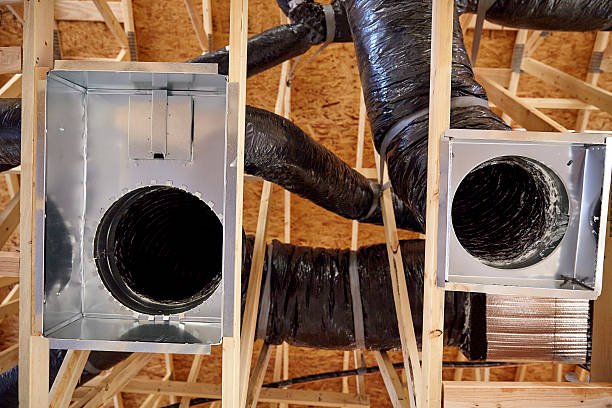
The supply plenum collects heated air from the heat exchanger before distributing it through the home (Source: iStock)
1.7. Burner
The burners are where the heating process begins. They pull natural gas from a gas line and mix it with oxygen to create a controlled flame, sparked by either a pilot light or an electronic ignition. When the thermostat signals for heat, the burners ignite and start warming the air inside the furnace.
1.8. Flame Sensor
The flame sensor is a safety component that detects heat from the hot surface ignitor. While it remains inactive when everything functions correctly, it plays a critical role by shutting down the system if no heat is detected—preventing potential gas leaks and ensuring safe operation.
If you’re looking for a reliable furnace flame sensor, AZParts has you covered:
- The 2-Pack 0130F00010 Flame Sensor
- The 3-Pack 0130F00010 Flame Sensor
- The 5-Pack 0130F00010 Flame Sensor
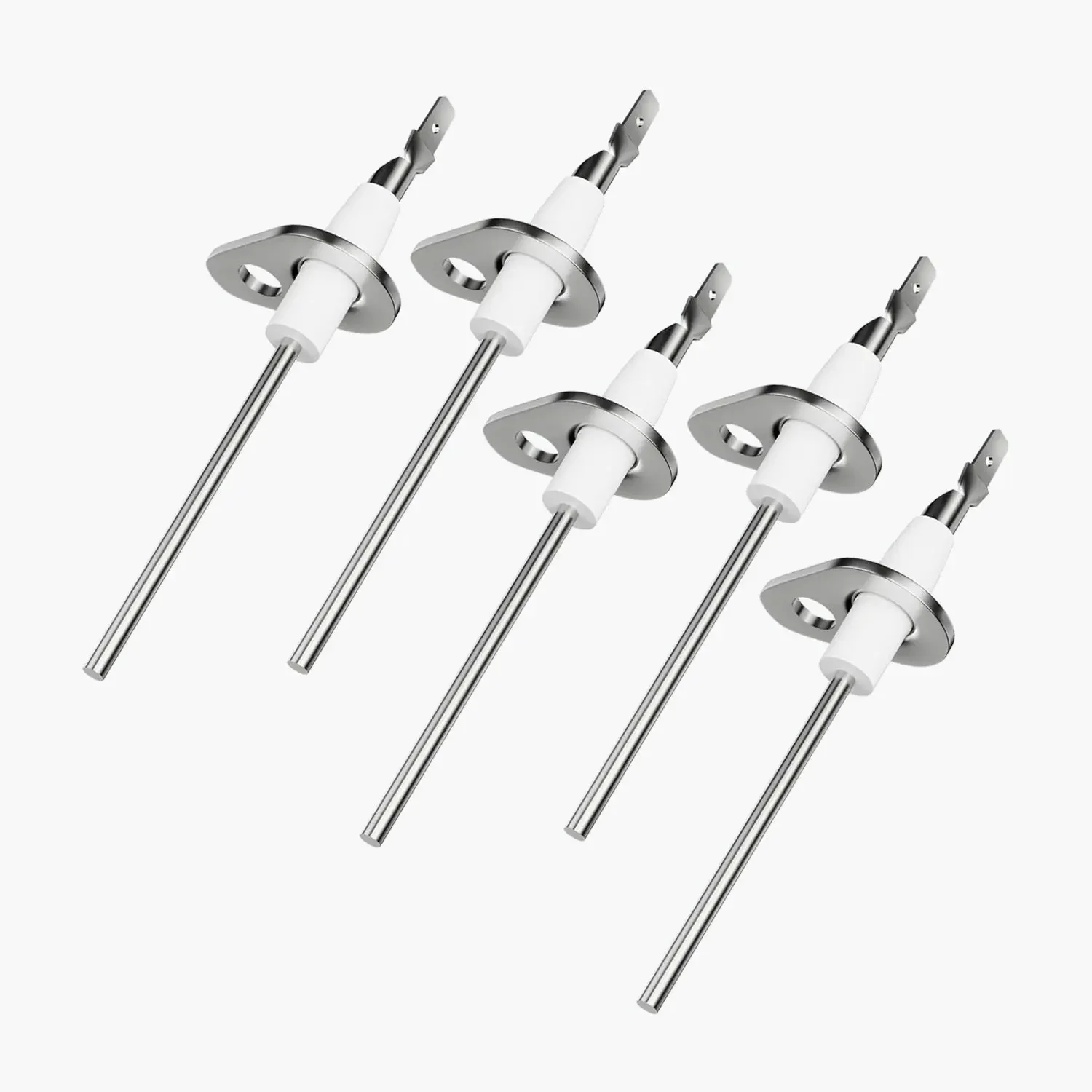
Flame Sensor Replacement Part suitable for Goodman and Amana Furnaces (Source: AZParts)
Built for durability and easy installation, these sensors detect the presence of a flame and help prevent dangerous gas buildup. Whether you're replacing a faulty part or keeping spares on hand, this 5-pack offers great value and peace of mind for your HVAC system.
See More: How to Replace a Furnace Flame Sensor: A Step-by-Step Guide
1.9. Pilot Light vs. Electronic Ignition
In older furnaces, a pilot light is a small flame that burns continuously, ready to ignite the gas when the furnace turns on. In contrast, modern furnaces use an electronic ignition system, which sends a signal to the ignitor when heating is needed. The ignitor then produces a spark to light the burner, offering a more energy-efficient and reliable ignition process.
1.10. Heat Exchanger
The heat exchanger is one of the most important parts of your furnace. After the burner ignites the fuel, it captures the heat from the combustion gases and safely transfers it to the air flowing through your home. Built from steel or cast iron, the heat exchanger keeps harmful gases contained inside while only allowing heat to pass through. Once the air is warmed, the leftover combustion gases are safely vented out through the flue pipe, making sure the air you breathe stays clean and healthy.
1.11.Gas Valve
The gas valve regulates the pressure of natural gas entering your home and controls the flow of gas to the furnace. It ensures the correct amount of gas is delivered for safe and efficient combustion.
1.12.Burner Cover
The burner cover is a protective panel that sits over key components such as the burners, flame sensor, blower chamber, and the electronic ignition or pilot light. It serves as a crucial safety feature, keeping the flames securely contained within the furnace housing.
1.13. Pressure Switch
The pressure switch is a safety device that confirms the draft inducer motor is operating correctly and venting harmful gases through the flue pipe. It uses a small diaphragm that responds to the vacuum created when the inducer motor is running. If the vacuum is strong enough, the diaphragm triggers a switch that allows gas to flow into the furnace. If no vacuum is detected, the switch remains open—preventing gas from entering and protecting your system from unsafe operation.
1.14.Limit Switch
The limit switch monitors the internal temperature of the furnace. If the temperature exceeds safe levels, the limit switch shuts off the gas supply to prevent overheating and reduce the risk of fire or damage to your furnace components.
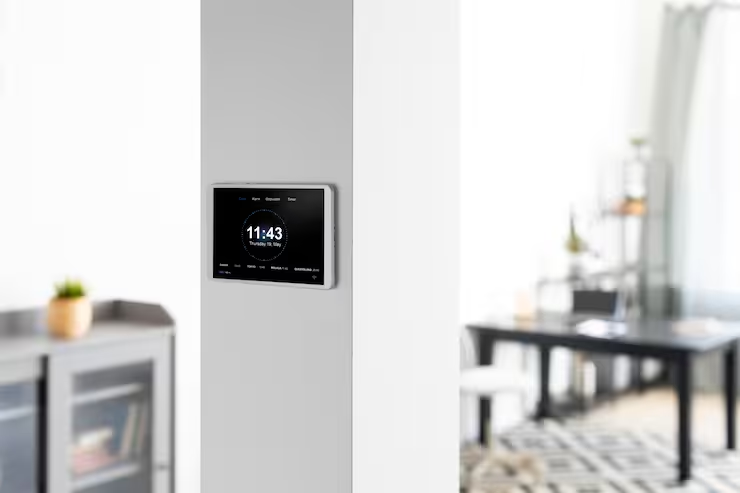
The limit switch is a key part of the furnace system, sending signals to activate the furnace (Source: Freepik)
2. FAQs about parts of a furnace
2.1. How do you tell if a furnace part needs to be replaced?
There are several signs that a furnace part may need to be replaced. Common indicators include strange noises, inconsistent heating, frequent cycling, unusual smells, or the blower not running. If your furnace won’t stay on, or if the pilot light keeps going out, faulty components such as the ignitor, flame sensor, or control board may be to blame.
Some symptoms are tied to specific parts—for example, a bad flame sensor can cause the burner to shut off prematurely. In some cases, a cracked heat exchanger may also pose safety risks and require immediate replacement.
2.2. How often should you inspect and maintain your furnace?
Furnace parts should be inspected and maintained once a year. Annual maintenance includes replacing air filters, checking the blower, and inspecting the heat exchanger, which helps your system run efficiently, prevents unexpected breakdowns, and extends the life of your furnace.
2.3. How much does a furnace part repair cost?
According to Airmaxx, furnace part repairs typically cost $100 to $1,500, depending on the part and complexity. For example, a blower motor costs around $300 – $700, and a control board runs $150 – $600. Besides, labor adds extra to the total.
2.4. What is the most expensive part to fix on a furnace?
One of the most expensive parts to repair or replace on a furnace is the heat exchanger. Other high-cost parts include the blower motor and control board. Regular maintenance can help catch issues early and reduce the chances of major repairs.
2.5. When is it time to replace furnace components?
Furnace components should be replaced based on their condition and usage. Air filters need changing every 1 to 3 months, while larger parts like blower motors often last 10 to 15 years. Regular inspections will help determine when it’s time for a replacement.
2.6. Is it safe and legal to replace furnace parts on your own?
In most cases, No — it’s not recommended. Replacing furnace parts yourself can be risky and may violate local building codes or void your warranty. Licensed HVAC professionals have the training to handle repairs safely, ensure proper installation, and comply with regulations. For anything beyond basic maintenance, it’s best to call a pro.
2.7. How long will a furnace last?
With regular maintenance, a furnace can typically last from 15 - 20 years. Staying consistent with yearly checkups and timely repairs can help extend its lifespan even further.
2.8. What warranty coverage is available for furnace parts?
Warranty coverage for furnace parts varies depending on the manufacturer, the specific component, and whether your system is properly registered. Always check the warranty terms for your specific furnace model to understand what's included and what might require additional protection.
A furnace has many essential parts that must work together to keep your home warm and safe. When components fail, AZParts provides reliable replacements to keep your system running efficiently. Visit AZParts and shop durable components that restore furnace performance fast.
Contact Information:
- Address: 8 The Green, Ste A, Dover, Delaware 19901-3618, United States
- Email: support@azparts.com
Furnace
- 1. Understanding All the Parts of a Furnace and their Functions
- 2. FAQs about parts of a furnace
- 2.1. How do you tell if a furnace part needs to be replaced?
- 2.2. How often should you inspect and maintain your furnace?
- 2.3. How much does a furnace part repair cost?
- 2.4. What is the most expensive part to fix on a furnace?
- 2.5. When is it time to replace furnace components?
- 2.6. Is it safe and legal to replace furnace parts on your own?
- 2.7. How long will a furnace last?
- 2.8. What warranty coverage is available for furnace parts?
Further Reading
Further Reading

